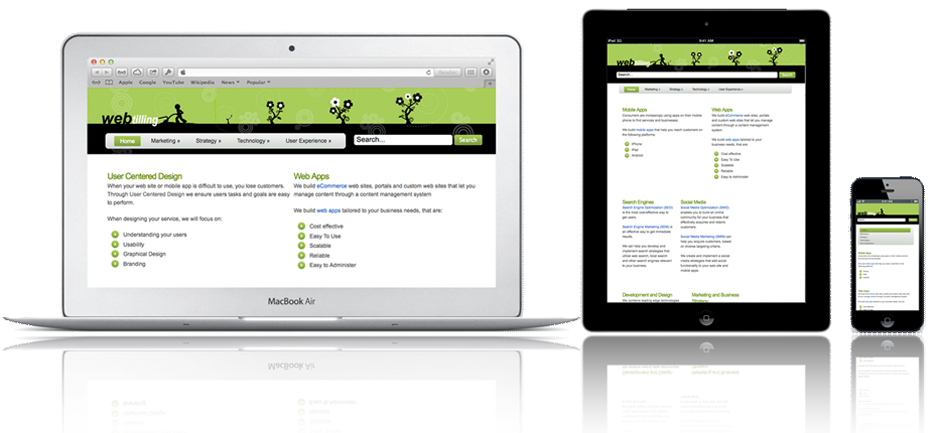The goal of your web design is to visually capture your brand and provide a good user experience for your customers. Every web design should achieve the following:
- Be visually attractive.
- Be easy to navigate.
- Meet the needs of your audience.
- Highlight what is most important.
- Be mobile friendly.
- Should perform well, i.e. be able to achieve quick load times.
Meet the Needs of Your Audience
Users have expectations when they come to your web site. Make every effort to make sure that those expectations are met. If you provide the functions and content that your users are looking for, your web site will be a success.
Usability testing is key to determining whether you are meeting the needs of your audience. Usability testing does not need to be extensive to be effective. 5 users are sufficient to find most problems. The most effective approach is to perform many small usability tests.
Analytics can help you identify where you have usability problems. Usability tests will help you pin point the problems and then determine whether your solutions to those problems are effective.
Visually Attractive Designs
Beauty can be very subjective. A clean design that utilizes white space to reduce clutter, will look attractive to your customers, because it will not get in the way of that they are trying to accomplish.
Easy Navigation
Users are accustomed to certain locations for web elements. For example,
- Logos are usually in the upper left
- Navigation is either across the top below the logo or in a column on the left hand side.
- Search is often in the upper right.
- A footer on the bottom will provide common inks, such as terms of service and a privacy policy.
- About Us and Contact Us pages are either the first things on a page or they are in the footer or both.
It is generally a good idea to keep these elements where users expect to find them. Navigation that does not contain elements where users expect is likely to be more difficult than one that does. Users are either going to search, browse or go directly to a function they know of. It is important to make it simple for them to any of these activities.
Highlight What is Most Important
Every page on your site has a purpose. But, no page should be a universe unto itself or a dead end. Make sure that the most important thing on a page stands out the most. This is what good web design achieves, through colors, graphics, typefaces, different sizes of elements, etc.
Mobile Friendly Designs
Mobile friendly designs adjust their presentation of navigation and content based on screen size or device.

Good Performance
Users do not like to wait for pages to load. 47% of web users say that they expect a page to load in less than 2 seconds. 40% of web users will leave if a page takes longer than 3 seconds to load.
Shopping Performance
79% of online shoppers will not return to a site that was slow. 52% of shoppers say that page loading time is an important factor in their loyalty to a site.
Search Performance
Google has demonstrated the importance of loading times with their search engine. If you take a close look you will notice that they tell you how quickly search results loaded next to the number of results.
Mobile Performance
73% of mobile users have encountered a slow site in the last month. Performance in the mobile world is even more important. Not only are users paying a performance penalty, they may also be paying extra for bandwidth if your site has a lot of graphics in its design.
Design Impact on Performance
Your design has an impact on performance. If it requires a lot of graphics, pages will take longer to load.